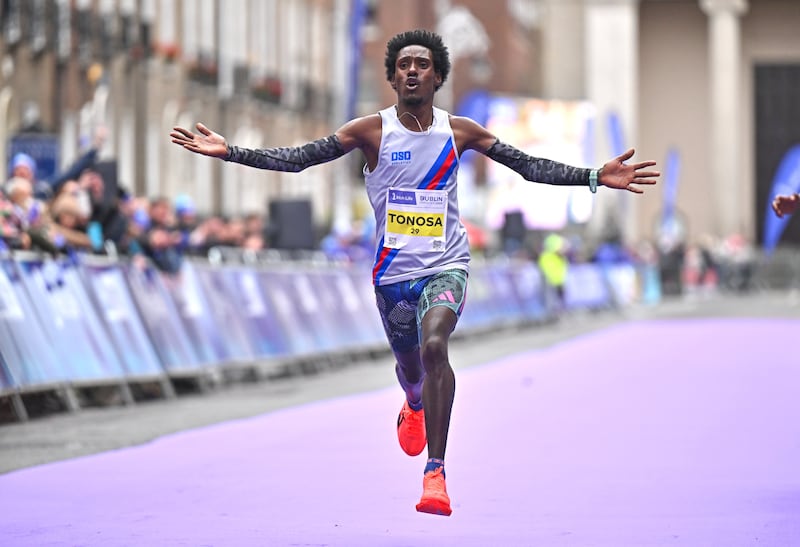After experiencing a worrying decline in the uptake of race-day entries in recent years, organisers of the Dublin Marathon have expressed their satisfaction in reversing that trend for Sunday’s event.
Of the 22,500 sell-out, just over 18,000 (18,091) made it through the race start line on Leeson Street on Sunday morning, and according to the Dublin Marathon race results, there were 17,719 official finishers, just shy of the event record.
In last year’s race, also a 22,500 sell-out, only 16,540 runners made the race start, with 16,347 listed as official race finishers – meaning around 6,000 race entries went unused, despite all paying the entry fee of €110, plus a handling charge of €5.50.
Most big city marathons expect a race-day entry attrition rate on the overall entry, typically around 20 per cent, due to a variety of understandable reasons – illness, injury, doubts, fears, second thoughts, reality checks etc – in the days, weeks and even months before.
RM Block
However, last year’s drop-off of 6,000 runners was around 25 per cent on Dublin’s initial race entry. It also marked a significant drop-off from the 2019 race, which was also limited to 22,500, with a record 17,724 official race finishers.
For this year’s race, a new transfer window opened from Wednesday, July 24th to Monday, August 26th, about a month later than last year, and which according to the organisers is the closest that transfer window could stay open ahead of the race day. In other years, the entry transfer window had closed even earlier.
“Getting the number of race-day entries back up over 18,000 is certainly satisfying for us,” said a spokesperson for the Dublin Marathon. “The drop-off of 20 per cent is back in line with most other major city marathons, and we’re already look at a number of ways of improving this again for 2025 and 2026.”
Of the 17,719 official race finishers on Sunday, 12,144 were men and 5,560 were women, with 15 listed as non-binary.

Dublin Marathon race director Jim Aughney admitted he was “at a loss” to explain last year’s 25 per cent drop-off in race-day uptake. He had been gearing for around 19,000 finishers, and a no-show of around 3,500 runners, going off the 2019 entry of 22,500, before Covid twice forced the postponement of the event in 2020 and 2021.
The true impact of that double postponement was revealed in the actual number which took part in the 2022 event: of the original 25,000 sell-out, only 14,773 were listed as official finishers.
Sunday’s event did produce a couple of records on other fronts, Hiko Tonosa delighting the home support with his third-place overall finish in 2:09:42, the fastest marathon ever run by an Irishman.
The 29-year-old running for Dundrum South Dublin was less than a minute behind outright winner Moses Kemei from Kenya (who ran 2:08:47) and improved Stephen Scullion’s previous Irish marathon record of 2:09:49, from London in 2020. John Treacy did run 2:09:15 in Boston in 1988, although that doesn’t count for record purposes due to Boston’s net downhill gradient.
The women’s elite race also produced a Dublin Marathon course record, Asmirach Nega from Ethiopia winning in 2:24:13.
Entries for the 2025 event will open later next month, beginning with the preferential early entry, which guarantees all those who entered the 2024 race a place next year, whether they showed up or not. This preferential early entry is also open for the same time frame for all women who entered the 2024 Dublin Half Marathon. This is to encourage and support more female entrants to the marathon.
[ Proud day for Hiko Tonasa as he sets new Irish marathon recordOpens in new window ]
Places will again be reserved for Athletics Ireland club members, as since 2003 the race also doubles as the national marathon championships. Applications for entries via the lottery system will then go live after the uptake in the preferential entry is known.
While most marathons work off that expected attrition rate of up to 20 per cent, some fare better than others. In 2018, the New York Marathon produced the highest completion rate; of the 52,812 starters, there were 52,121 finishers, an astonishing completion rate of 99.4 per cent.
















